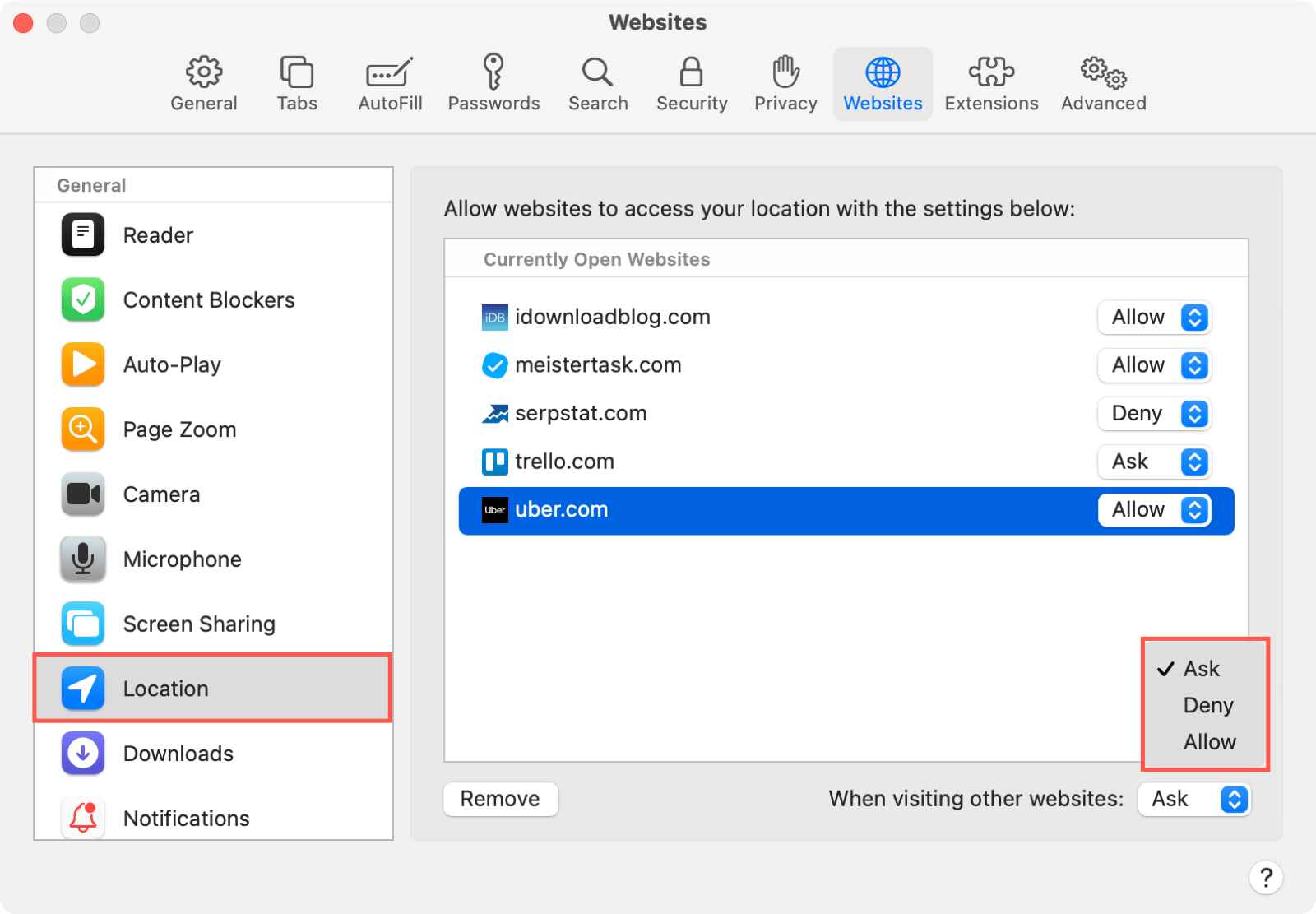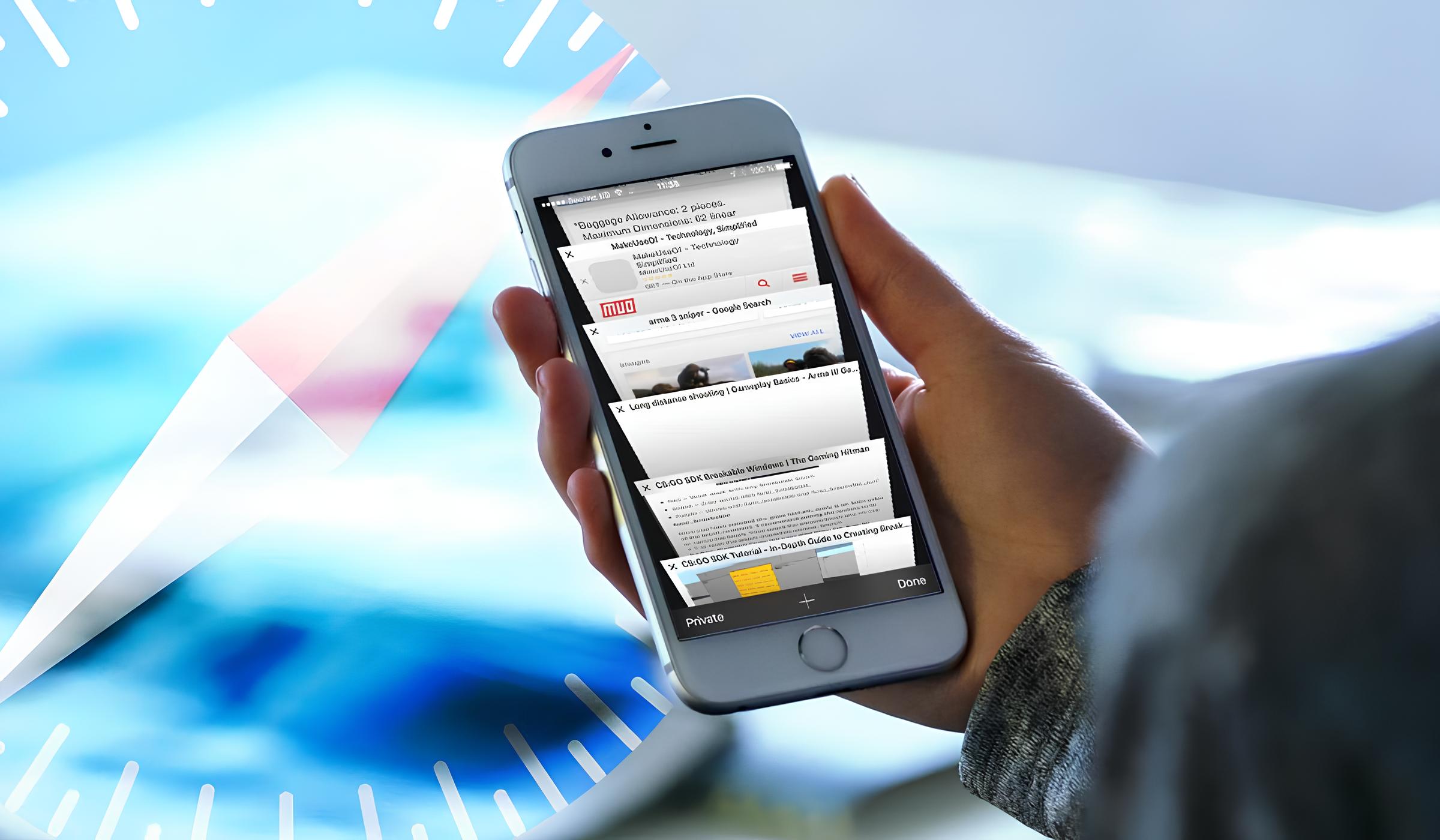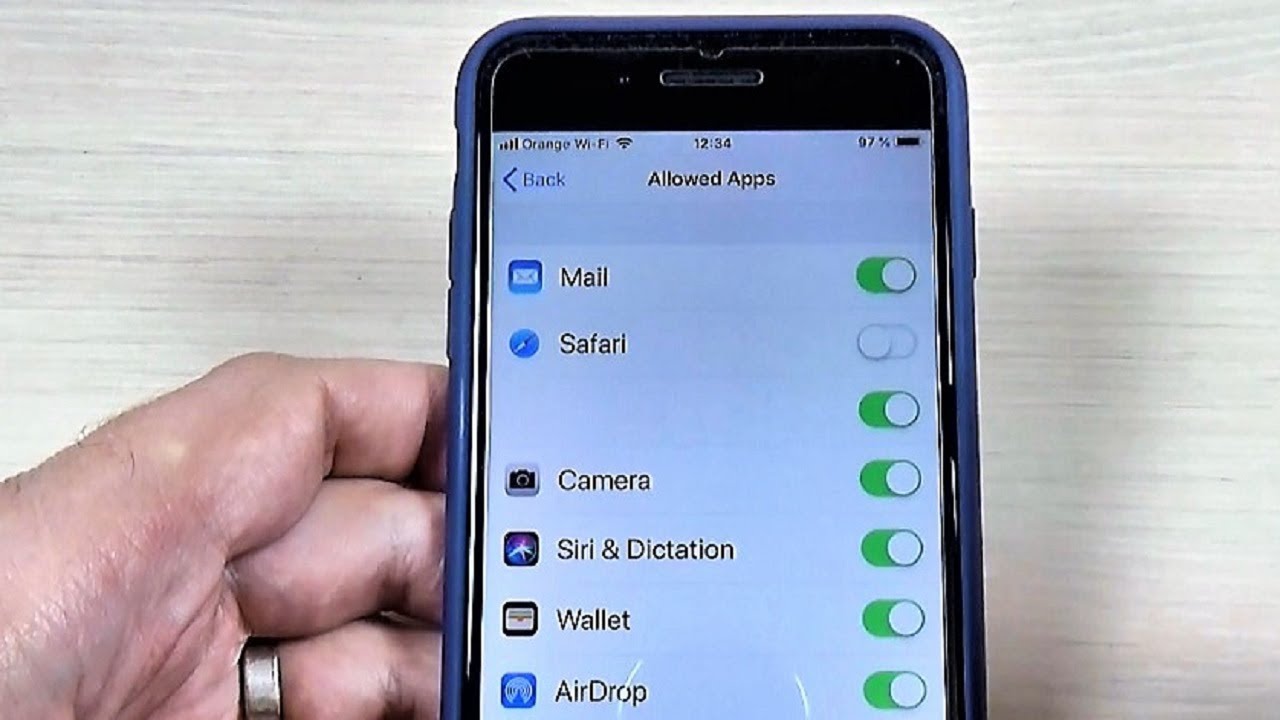Introduction
Welcome to the world of browsing with Safari, Apple's sleek and intuitive web browser. Safari offers a seamless and secure browsing experience, and one of its key features is the ability to access your location for various purposes, such as providing personalized recommendations, local search results, and location-based services. Whether you're using Safari on your iPhone, iPad, or Mac, enabling location access can greatly enhance your browsing experience.
In this guide, we'll walk you through the simple steps to allow location access on Safari, ensuring that you can make the most of location-based features while maintaining control over your privacy and security. Whether you're looking to find nearby restaurants, get accurate weather forecasts, or access location-specific content, enabling location access on Safari is the first step towards unlocking a world of personalized and relevant information.
So, if you're ready to harness the full potential of Safari's location-based capabilities, let's dive into the step-by-step process of allowing location access on this innovative web browser. Whether you're a seasoned Safari user or just getting started, this guide will equip you with the knowledge and confidence to seamlessly integrate location-based features into your browsing experience. Let's get started!
Step 1: Open Safari Settings
To begin the process of allowing location access on Safari, the first step is to open the Safari settings on your device. Whether you're using an iPhone, iPad, or Mac, accessing the settings is the gateway to customizing your browsing experience and enabling location-based features.
On iPhone or iPad:
- Start by unlocking your device and locating the Safari app icon on your home screen. The Safari icon is easily recognizable, featuring a compass rose design.
- Tap on the Safari icon to launch the browser. Once Safari is open, look for the "Settings" icon, which resembles a gear and is typically located in the lower-right corner of the screen.
- Tap on the "Settings" icon to access the Safari settings menu. This is where you can configure various aspects of the browser, including privacy and security settings.
On Mac:
- If you're using Safari on a Mac, begin by opening the Safari browser from your applications folder or the dock. Once Safari is open, navigate to the top-left corner of the screen and click on "Safari" in the menu bar.
- In the drop-down menu, select "Preferences." This will open a window with various tabs, allowing you to customize Safari's settings and preferences.
By following these simple steps, you'll successfully access the Safari settings on your device, setting the stage for the next steps in enabling location access. With the Safari settings at your fingertips, you're ready to delve into the next phase of the process, which involves navigating to the privacy and security settings to enable location access seamlessly.
Now that you've successfully accessed the Safari settings, let's move on to the next step in the process of allowing location access on Safari. This will bring us closer to harnessing the full potential of location-based features within the Safari browser, enhancing your browsing experience with personalized and relevant content based on your location.
Step 2: Tap on Privacy & Security
Once you've accessed the Safari settings on your device, the next crucial step in enabling location access involves navigating to the "Privacy & Security" section. This is where you can fine-tune your privacy settings and manage permissions for various aspects of the browser, including location access.
On iPhone or iPad:
After accessing the Safari settings, scroll down the menu until you find the "Privacy & Security" option. It's essential to tap on this section to delve into the specific settings that govern location access and other privacy-related features within Safari.
On Mac:
In the Safari preferences window, you'll find a series of tabs at the top of the window. Click on the "Privacy" tab to access the privacy settings for Safari. This is where you can manage website tracking, cookies, and location access permissions.
Upon tapping on the "Privacy & Security" section, you'll be presented with a range of options and settings that allow you to customize your privacy preferences within Safari. This is where you can take control of how Safari interacts with your location data and decide whether to enable or disable location access for websites and services.
By tapping on "Privacy & Security," you're taking a proactive step towards managing your privacy and security within the Safari browser. This level of control empowers you to make informed decisions about how your location information is utilized by websites and services, ensuring that you can enjoy the benefits of location-based features while maintaining a strong sense of privacy and security.
With the "Privacy & Security" section at your fingertips, you're now poised to delve into the next steps of the process, which involve enabling location access and fine-tuning the specific permissions related to location-based services within Safari. This brings us closer to fully harnessing the potential of location-based features, allowing you to experience a more personalized and relevant browsing experience based on your geographical location.
As you navigate through the "Privacy & Security" settings, you're actively shaping your browsing experience, ensuring that Safari aligns with your preferences and priorities when it comes to privacy and security. This level of customization sets the stage for a seamless and tailored browsing experience, where location-based features work in harmony with your individual preferences and privacy considerations.
Now that you've successfully tapped on "Privacy & Security," let's proceed to the next steps, where we'll delve into the process of enabling location access within Safari, bringing you closer to unlocking the full potential of location-based features and services.
Step 3: Enable Location Access
Enabling location access within Safari is a pivotal step that empowers you to take full advantage of location-based features and services while browsing the web. By granting Safari permission to access your device's location, you open the door to a myriad of personalized and relevant experiences, ranging from tailored search results to location-specific content. Whether you're seeking local recommendations, weather updates, or location-aware services, enabling location access is the key to unlocking a more enriched browsing experience.
On iPhone or iPad:
After navigating to the "Privacy & Security" section within Safari settings, you'll find the option to manage location access. Tap on "Location Services" to delve into the specific settings related to location permissions. Here, you can enable location access for Safari by toggling the corresponding switch to the "on" position. This grants Safari the ability to utilize your device's location for a range of location-based features and services, enhancing your browsing experience with personalized and relevant content.
On Mac:
Within the "Privacy" tab of Safari preferences, you'll encounter the option to manage website tracking, cookies, and location access permissions. To enable location access for Safari on your Mac, navigate to the "Website use of location services" section and select the appropriate setting that aligns with your preferences. By allowing Safari to access your location, you pave the way for a more tailored browsing experience, where location-based features seamlessly integrate with your web interactions.
By enabling location access within Safari, you're not only embracing the potential for personalized and relevant content but also ensuring that location-based services can enhance your browsing experience. Whether it's receiving localized search results, accessing location-specific information, or enjoying tailored recommendations, enabling location access within Safari sets the stage for a more enriched and dynamic browsing experience.
With location access enabled, Safari can leverage your device's location to deliver content and services that are tailored to your geographical context, creating a more immersive and personalized browsing journey. This level of customization ensures that your browsing experience is not only relevant but also reflective of your individual preferences and interests, all while maintaining a strong emphasis on privacy and security.
Now that you've successfully enabled location access within Safari, you're poised to explore the next phase of the process, where you can fine-tune the specific settings that govern when and how Safari can access your location. This level of control ensures that you can tailor the use of location-based features to align with your preferences and priorities, creating a browsing experience that seamlessly integrates with your unique needs and interests.
Step 4: Choose When to Allow Location Access
After enabling location access within Safari, you gain the ability to further customize when and how the browser can utilize your device's location. This level of control empowers you to tailor the use of location-based features to align with your specific preferences and needs, ensuring that your browsing experience remains personalized and relevant while maintaining a strong emphasis on privacy and security.
On iPhone or iPad:
Upon enabling location access for Safari, you can delve into the specific settings that govern when the browser is permitted to access your device's location. By navigating to the "Location Services" section within Safari settings, you'll encounter a list of apps and services that have requested access to your location. Here, you can fine-tune the permissions for Safari, allowing you to choose when the browser can access your location.
Within the "Location Services" settings, you'll find various options to manage location access for Safari. These options may include "Never," "While Using the App," and "Always." By selecting "While Using the App," you grant Safari permission to access your location only when the browser is actively in use, ensuring that location-based features are available during your browsing sessions. This setting strikes a balance between personalized content and privacy, as Safari can leverage your location to enhance your browsing experience while respecting your privacy when the app is not in use.
On Mac:
In the Safari preferences, you can manage the specific settings related to website use of location services. Here, you have the opportunity to customize when Safari is allowed to access your location, aligning the browser's behavior with your preferences and priorities. By selecting the appropriate setting that best suits your needs, you can ensure that Safari leverages your location in a manner that enhances your browsing experience without compromising your privacy and security.
By choosing when to allow location access within Safari, you're actively shaping the browser's behavior to align with your individual preferences and needs. This level of customization ensures that location-based features seamlessly integrate with your browsing experience, providing personalized and relevant content based on your geographical context while maintaining a strong emphasis on privacy and security.
With the ability to choose when to allow location access, you're equipped with the tools to create a browsing experience that is tailored to your unique needs and preferences. Whether you prefer location-based recommendations while actively using Safari or seek a more restricted approach to location access, Safari's customizable settings empower you to shape your browsing journey according to your individual priorities.
As you navigate through the settings to choose when to allow location access within Safari, you're actively fine-tuning the browser's behavior to align with your preferences, ensuring that location-based features enhance your browsing experience in a manner that respects your privacy and security. This level of control ensures that Safari seamlessly integrates with your unique needs, providing a personalized and relevant browsing experience based on your geographical context.
Conclusion
Congratulations! By following the simple yet impactful steps outlined in this guide, you've successfully enabled location access within Safari, unlocking a world of personalized and relevant browsing experiences based on your geographical context. As you've navigated through the Safari settings, tapped into the privacy and security options, and fine-tuned the permissions for location access, you've taken proactive steps to shape your browsing experience according to your individual preferences and priorities.
Enabling location access within Safari empowers you to seamlessly integrate location-based features and services into your browsing journey, ensuring that you receive tailored recommendations, localized search results, and location-specific content that enrich your online interactions. Whether you're seeking nearby attractions, weather updates, or personalized recommendations, Safari's ability to leverage your device's location enhances your browsing experience, creating a more immersive and relevant journey through the digital landscape.
By choosing when to allow location access, you've further personalized the use of location-based features within Safari, aligning the browser's behavior with your specific needs and preferences. This level of control ensures that Safari respects your privacy and security while delivering personalized and relevant content based on your geographical context, creating a browsing experience that is both enriching and tailored to your unique requirements.
As you continue to explore the diverse capabilities of Safari, from its intuitive interface to its seamless integration with Apple's ecosystem, the ability to harness location-based features adds a new dimension to your browsing experience. Whether you're using Safari on your iPhone, iPad, or Mac, the power of location access enhances your interactions with the web, ensuring that your browsing journey is not only relevant but also reflective of your individual preferences and interests.
With location access enabled, Safari becomes a dynamic and personalized gateway to the digital world, where your geographical context shapes the content and services you encounter. This level of customization ensures that your browsing experience remains tailored to your unique needs, providing a seamless fusion of personalized content and privacy-conscious interactions with the web.
As you continue to explore the vast expanse of the digital landscape with Safari as your trusted companion, the ability to leverage location-based features will undoubtedly enrich your browsing journey, providing a seamless blend of relevance, personalization, and privacy. With location access enabled, Safari becomes more than just a browser – it becomes a personalized gateway to a world of tailored and relevant content, all seamlessly integrated with your geographical context.
So, as you embark on your continued exploration of the digital realm with Safari, may the power of location access enhance your browsing experience, providing a seamless fusion of relevance, personalization, and privacy as you navigate the web with confidence and ease.

























